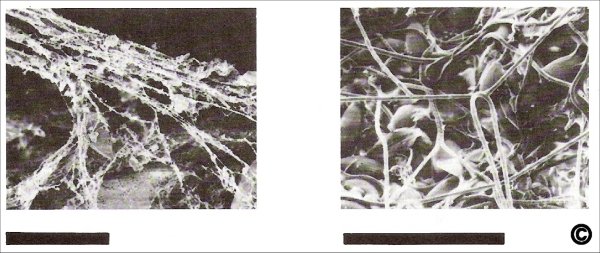Biogeomorphological Implications of Microscale Interactions between Sediment Geotechnics and Marine Benthos
John M. H. Murray, Azra Meadows and Peter S. Meadows
2002
Geomorphology 47, 15 – 30.
Biosedimentology Unit,
Division of Environmental and Evolutionary Biology,
Institute of Biomedical and Life Sciences,
Graham Kerr Building,
University of Glasgow, Glasgow G12 8QQ.
Email: gbza21@udcf.gla.ac.uk
Abstract
At the foundations of biogeomorphological processes in the sea lie interactions between the activities of marine benthic animals and the geotechnical properties of their sedimentary environments. The potential significance of these interactions, which take place at a microscale level of millimetres to metres, for the large-scale geomorphology of the seabed has rarely been appreciated. The present paper addresses this link, drawing examples from a wide range of marine environments, including estuaries, the intertidal zone, continental shelves and slopes, and the deep sea. It firstly considers sediment stabilisation, slope failure, sediment mixing, biodeposition, sediment compaction, and hydrodynamic effects. This is followed by a consideration of two extremes of the ecological pyramid - the effects of marine meiofauna and marine vertebrates. The final section draws attention to the central role of faunal mucus and extracellular polymeric material in many of the microscale interactions that we describe. The implications of these microscale biological processes and features are discussed in terms of their influence on and control of the large-scale geomorphology of the seabed.
Introduction
Sedimentary environments in the sea are very diverse. They range from sheltered deltas and lagoons of temperate and tropical waters, through the continental shelves and slopes surrounding major continents, to the vast abyssal plains that cover half of the Earth. Their geomorphological features include submarine hills, sand waves, ripples, banks, channels, canyons, turbidites and slope failure scars. All of these environments are colonised by living organisms of one sort or another, and in all of them physical and biological phenomena play a central role in determining the overall geomorphology of the area.
Many of these studies identify clear interactions between sediment geotechnics and faunal colonisation by benthic animals. Biological interactions of this sort have been reported with shear strength, slope stability, permeability, erodability, and sedimentation. All of these have highly significant potential implications for the geomorphology of the seabed.
In this paper we consider interactions between living organisms and sediments at a scale of millimetres to metres - referring to them as microscale interactions, and show how they impact on larger scale geomorphological features and processes.
We firstly consider the role played by microscale biological activity in sediment stabilisation, slope failure and sediment mixing. We then describe biodeposition, biological activity and sediment compaction, and hydrodynamic conditions at the sediment-water interface. This latter includes biogenic bottom features, animal tubes projecting from the sediment surface, and biological armouring. We consider two extremes of the ecological pyramid - marine meiofauna and marine vertebrates - both of which can have major effects on sediment geotechnics. In the final part of the paper we emphasise the geomorphological importance of microscale biological interactions that involve extracellular polymeric material (ECPM) and faunal mucus - including flocculation, drag reduction, pore blockage, and cementation. We address the implications of these microscale interactions for larger scale geomorphological processes and features, and consider the central role that these interactions are likely to play in determining the larger scale geomorphology of the sea bed.
Wider Implications
We have shown that biological communities can alter the mechanical properties of marine sediments, and can therefore impact on the geomorphology of the resulting bedforms. This has a number of implications, one of which is the importance of community ecology in sedimentological and geomorphological processes. For example, if within a community one species is replaced by another species and these species differ in their geomorphological impact, the large-scale outcome will be radically different. Another instance relates to the energetics of sedimentary and geomorphological processes. Geomorphological processes are dependent on the balance between driving forces and resisting forces acting on sediment. By incorporating the biomechanical activity of fauna into such processes, it naturally follows that the chemical energy stored in the tissues of organisms becomes available to do sedimentological or geomorphological work.
Colonies of blue green algae and diatoms binding marine sand grains together. Black bar = 50 microns.

Left hand scanning electron photomicrograph
© Copyright Samira Hussain.
Extracellular polymeric material produced by the burrowing polychaete Nereis diversicolor, binding sand grains together. Black bar = 100 microns.
Right hand scanning electron photomicrograph.
© Copyright Azra Meadows.
Blue-green algae and diatoms in sediment interstices.

